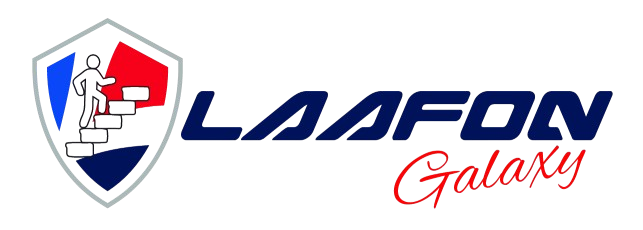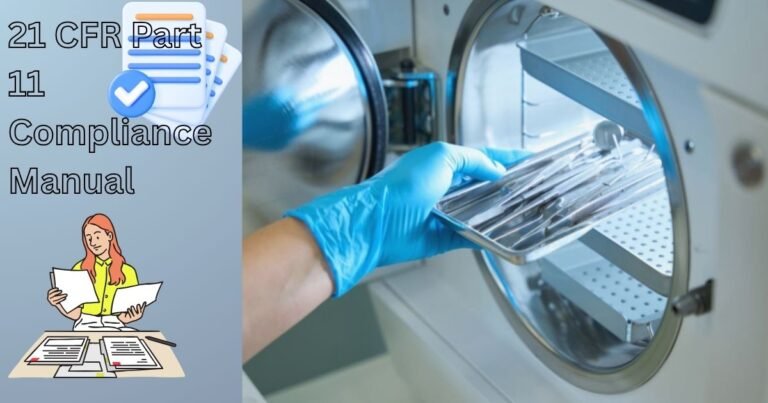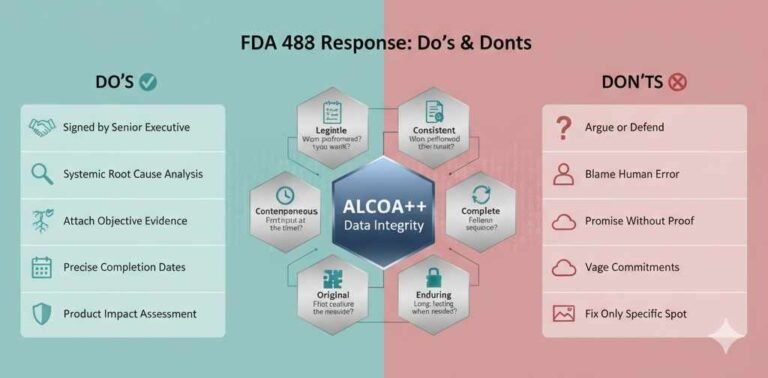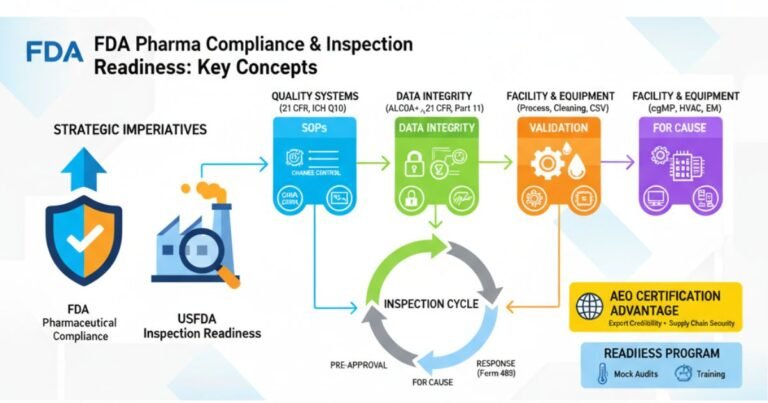A USFDA Warning Letter (WL) is more than a mere correspondence; it is a public declaration of significant non-compliance with the Federal Food, Drug, and Cosmetic Act, posing an immediate, existential threat to a pharmaceutical, medical device, or biologics operation. The stakes include: loss of product approval, import bans (Detention Without Physical Examination – DWPE), cessation of operations (seizure/injunction), and severe reputational damage leading to drastic business losses.
As of 2025, FDA enforcement trends are increasingly focused on data integrity, quality culture, and the systemic failure of the Quality Management System (QMS), moving beyond isolated observation-level issues.
This document serves as the authoritative, go-to compliance blueprint for professionals facing this regulatory challenge. A world-class WL Compliance Plan must be systemic, evidence-based, data-driven, and centered on prevention. It requires not just fixing observations but fundamentally re-engineering the culture and control systems to ensure sustained GMP compliance and earn a close-out letter.
Step-by-Step USFDA Warning Letter Compliance Response Workflow
The clock starts ticking the moment the Warning Letter is received. The standard regulatory deadline is 15 working days for a comprehensive response.
| Phase | Actionable Strategy | Critical Timeline | Owner/Role |
| Phase I: Immediate Containment | A. Triage & Legal Review: Regulatory Affairs, Legal, and the C-Suite review the letter’s scope and severity (e.g., 21 CFR 211 violations, data integrity claims). | Day 1-2 | C-Suite Sponsor, Legal |
| B. Quarantine & Control: Immediately stop distribution, quarantine affected inventory, and implement interim controls to prevent further non-compliant actions. | Day 1-3 | QA/Operations | |
| C. Internal Audit Kick-off: Initiate a systemic, comprehensive internal audit focused on the entire system the WL observation pertains to, not just the observation site. | Day 3-5 | Head of QA/External Consultant | |
| Phase II: Investigation & Strategy | A. Multi-Disciplinary Team Formation: Assemble the core response team (See next section). | Day 1 | Program Manager |
| B. Deep Root Cause Analysis (RCA): Execute RCA on every cited observation, extending the analysis to determine systemic failure (e.g., culture, training, resource allocation). | Day 3-10 | RCA Team Lead | |
| C. CAPA Plan Development: Draft the initial, detailed Corrective and Preventive Action (CAPA) plan for all observations, prioritizing quick-win Immediate Corrections. | Day 5-12 | QA/Regulatory Affairs | |
| Phase III: Response Drafting & Submission | A. Evidence Collection: Gather concrete evidence (e.g., revised SOPs, training records, validation protocols) to support planned or completed actions. Never promise action without a commitment timeline and evidence of resources. | Day 10-14 | Regulatory Affairs |
| B. Response Finalization: Structure the response in a point-by-point format, addressing each observation. Include a high-level Executive Summary and a robust Commitment Statement from executive leadership. | Day 13-14 | Regulatory Affairs/Legal | |
| C. Submission: Submit the response via certified mail and email. | Day 15 | Regulatory Affairs |
Building the Multidisciplinary Response Team and External Engagement
A WL response cannot be handled by QA alone. It requires a dedicated, empowered, and well-structured team.
Core Team Structure and Roles
- C-Suite Sponsor: The ultimate owner (CEO or COO). Must sign the response letter, demonstrating top management commitment—a critical FDA expectation.
- Program Manager/Lead: A dedicated, experienced professional (often the Head of QA or Regulatory Affairs) who drives the timeline, resource allocation, and CAPA tracking.
- Core Response Team: Subject Matter Experts (SMEs) from Operations, R&D, QC Lab, IT/Data Management, and Engineering.
- Regulatory Affairs: Responsible for drafting, structuring, and formally submitting the response, ensuring the tone and language meet FDA expectations.
Strategic Use of External Consultants
Engaging external experts is almost always necessary to demonstrate objectivity and bring specialized expertise.
- Gap: Internal teams often lack the necessary objectivity and specialized knowledge of FDA enforcement trends (a gap filled by this 2025 advice).
- Strategy: Utilize experienced regulatory compliance consultants (often former FDA officials) to perform the independent, systemic audit and critically review the draft response before submission. Their stamp of approval adds credibility.
- Role: Lead the independent Root Cause Analysis, provide counsel on enforcement nuances, and help establish metrics for effectiveness checks.
Root Cause Analysis (RCA): Moving Beyond the Symptom
The FDA expects remediation to address the deepest, most systemic root cause. Failing to do so results in recurring observations (a major trend in 2025 WLs, often cited as a failure of the QMS).
Best Practices & Techniques
- Beyond 5 Whys: While the 5 Whys is a starting point, a comprehensive WL RCA requires more advanced tools:
- Fishbone (Ishikawa) Diagram: Categorize causes into Man, Method, Machine, Material, Measurement, and Environment.
- Kepner-Tregoe (KT) Analysis: Ideal for complex deviations, focusing on what, where, when, and the extent of the problem to distinguish between cause and effect.
- Human Factors Analysis: A critical 2025 trend. This examines underlying reasons for human error (e.g., poor SOP design, inadequate training, excessive workload, confusing equipment interface), not just blaming the operator.
- Systemic Scope: If a WL cites a single batch record error, the RCA must investigate the entire batch record review system, training program for reviewers, document control, and management oversight.
- Documentation Rigor: The final response must include the RCA conclusion, linking it directly to the CAPA strategy, explicitly stating: “The RCA concluded that [Systemic Failure X] was the true root cause, leading to our commitment to [CAPA Y].”
Developing Closed-Loop CAPA: The Gold Standard for Remediation
The CAPA plan is the heart of the Compliance Plan. It must be a “closed-loop” system, ensuring actions are completed, verified, and proven effective.
Sample CAPA Template & Checklist
| Element | Description/FDA Expectation | Status | Completion Date | Evidence Reference |
| I. Immediate Correction (Containment) | Action taken immediately to stop the problem and protect the patient/product supply (e.g., stop using faulty equipment, recall/quarantine product). | Complete | Day 5 | Logbook/Quarantine Memo |
| II. Corrective Action (Fixing) | Action taken to eliminate the identified root cause for the current failure (e.g., rewrite SOP, re-validate process/equipment). | In-Progress | 90 Days | SOP Rev. No./Validation Protocol |
| III. Preventive Action (Systemic) | Action taken to eliminate the potential for recurrence in other processes or sites (e.g., fleet-wide SOP rollout, upgrade DQMS across all sites, implement predictive analytics). | In-Progress | 180 Days | Project Charter/System Upgrade Plan |
| IV. Effectiveness Check (Verification) | A formal, documented, post-implementation audit/review to verify the CAPA successfully eliminated the root cause and prevented recurrence for a defined period (e.g., 6 months). | Scheduled | 6 Months | Effectiveness Check Report |
| V. Resource Commitment | Clear commitment of financial and personnel resources to successfully execute the CAPA within the committed timeline. | Complete | Day 15 | Signed Management Commitment |
- Insight on Timelines: The FDA recognizes deep-seated systemic changes take time. It is better to commit to a robust, verifiable 180-day action plan with detailed milestones than to promise an impossible 30-day fix.
FDA Submission Guidelines and Communication Best Practices
The response document itself must be professional, transparent, and legally sound.
- Structure and Format: The response must mirror the Warning Letter’s structure, addressing each numbered observation point-by-point.
- Quote the FDA’s observation verbatim.
- State Agreement/Disagreement: Acknowledge the observation (disagreeing without concrete evidence is rare and highly risky).
- Describe the Immediate Correction.
- Detail the Root Cause Analysis (RCA) Conclusion.
- Present the Detailed CAPA Plan (Milestone table).
- Provide Objective Evidence (e.g., training sign-off sheets, revised SOP covers, validation summaries) as attachments.
- Communication Tone: The tone must be deferential, factual, and demonstrate a profound commitment to quality. Avoid defensiveness. Frame the issues as “opportunities for system enhancement.”
- The Crucial Role of Interim Reports: Given the complexity of systemic remediation, a one-time response is insufficient. Best practice (essential in 2025) is to commit to periodic (e.g., 90-day) interim reports that update the FDA on the progress of long-term CAPAs, proactively demonstrating momentum and transparency.
Leveraging Digital Tools for Rigorous Compliance Tracking
The shift to Digital Quality Management Systems (DQMS) and advanced analytics is no longer optional—it is a core expectation for robust compliance.
- The Power of DQMS: A validated DQMS is essential for:
- Closed-Loop CAPA Management: Automating the tracking, routing, and approval of CAPAs, ensuring no steps (especially Effectiveness Checks) are skipped.
- Audit Trail Rigor: Providing irrefutable, time-stamped evidence of every change, review, and approval related to remediation.
- Training Management: Instantly deploying and tracking mandatory new training associated with revised SOPs.
- Advanced Analytics and AI:
- Predictive Compliance: Leveraging data lakes of deviations, OOS, and complaints to identify emerging systemic risks before they become WL-level issues. AI models can predict which specific processes are at highest risk for repeat human error.
- Trending: Establishing Key Performance Indicators (KPIs) and Quality Metrics related to the WL observations (e.g., SOP adherence rate, Deviation recurrence rate, Batch Release cycle time) and demonstrating a sustained positive trend post-remediation.
- Gap Filled: Simple spreadsheet tracking is obsolete. The FDA expects the QMS to be demonstrably in control and leveraging technology to prevent recurrence.
Post-Submission Actions and Inspection Readiness
The response is a commitment; the post-submission phase is the execution and proof.
Audit Trails and Monitoring
Every action promised in the response must be meticulously documented. This includes:
- CAPA Execution Records: All documents must be completed, reviewed, and approved within the committed date.
- Management Review: The revised QMS, the execution of the Compliance Plan, and the associated Quality Metrics must be a standing, mandatory agenda item for Senior Management Review for at least 1-2 years post-WL.
- Third-Party Audits: Commission a final, comprehensive, third-party mock inspection once all major CAPAs are complete to simulate the FDA re-inspection.
Close-Out Letter Criteria
The FDA typically issues a “close-out” letter only after two conditions are met:
- The company has submitted evidence demonstrating full and sustained compliance with all commitments.
- The FDA has conducted a re-inspection of the facility and found the compliance systems to be robust and effective.
- Strategy for Close-Out: Do not wait for the FDA. Proactively submit a final, comprehensive package of evidence once you have verifiable, objective proof (e.g., 6 months of clean data post-CAPA) that the system is fixed and stable, specifically requesting a re-inspection.
Mistakes to Avoid: Learning from 2025 Enforcement
Avoid the compliance pitfalls that have resulted in repeat Warning Letters and Consent Decrees.
| Common Mistake | Mitigation Strategy (Error Proofing) |
| Data Integrity Failure | Do not self-investigate data issues without an independent party. Ensure all computer systems are 21 CFR Part 11 compliant. Institute robust, real-time audit trail reviews and a Culture of Candor where errors can be reported without retribution. |
| Symptom-Level Fixes | Never only fix the SOP. Use RCA to identify the underlying QMS failure (e.g., inadequate management oversight, poor resource allocation, failed training program). Commit to systemic, enterprise-wide CAPAs. |
| “Over-Promising and Under-Delivering” | Do not commit to actions or timelines you cannot meet. The FDA views a broken commitment as a major failure of management control. Provide realistic timelines and ensure resource allocation is documented. |
| Failing the Effectiveness Check | Do not treat CAPA close-out as the end. Mandate a formal, metrics-based effectiveness review 3-6 months post-implementation, proven by clean data, and documented for FDA review. |
Proactive Elements for Sustained GMP and Regulatory Compliance
A robust response plan is the foundation for a permanent state of compliance.
- Quality Culture Program: The FDA consistently cites “lack of management oversight” and “failure of quality culture.” Proactively launch a formal program that defines expected quality behaviors, provides continuous training, and institutes non-punitive error reporting systems.
- Quality Risk Management (QRM): Embed QRM principles (ICH Q9) into all processes. Use risk-based decisions to prioritize and resource all CAPAs, focusing remediation efforts on areas of highest risk to product quality and patient safety.
USFDA Compliance Plan in One Page: Final Checklist
| Action Item | Status |
| 15-Day Response | Submitted on time (Day 15)? |
| Executive Commitment | Signed by a C-level executive? |
| Observation Triage | Every point addressed individually? |
| RCA Depth | Root cause linked to a systemic QMS failure? |
| CAPA Rigor | Is every CAPA specific, measurable, achievable, relevant, and time-bound (SMART)? |
| Immediate Correction | Completed and evidenced? |
| Effectiveness Check | Scheduled and metrics defined? |
| Evidence Quality | All claims supported by objective, attached evidence? |
| DQMS/Tracking | CAPAs tracked in a validated, secure system? |
| Interim Reports | Schedule for 90-day updates committed to the FDA? |
| Mock Audit | Final, independent mock inspection scheduled? |
| Training (Systemic) | New/revised training deployed and documented? |
Frequently Asked Questions
Should we hire an external consultant?
Yes, unequivocally. An external expert provides the objective, unbiased view of system deficiencies required to convince the FDA that the company is serious about systemic change.
What if we can’t meet the 15-day deadline?
Do not send a hollow response. Contact the FDA district office immediately via a formal letter requesting a reasonable extension (e.g., 10 days), providing clear justification (e.g., complexity of RCA) and evidence of interim containment actions already taken.
Does the FDA ever issue a second Warning Letter?
The FDA is more likely to escalate to an Establishment Inspection Report (EIR) designation of Official Action Indicated (OAI), placing the firm on Import Alert (if applicable), or even seeking a Consent Decree of Permanent Injunction if the Warning Letter issues are systemic and recurring.
How long until we get a “close-out” letter?
Typically, 12 to 24 months after the initial response, following the completion of all CAPAs, submission of the final evidence package, and a successful re-inspection. Sustained compliance is the key.
Facing an FDA Warning Letter? Don’t delay. Download our ‘Rapid Response Checklist’ now to initiate your 15-day compliance plan and protect your operations.
References
- FDA Warning Letters: [https://www.fda.gov/inspections-compliance-enforcement-and-criminal-investigations/compliance-actions-and-activities/warning-letters]
- FDA Compliance Program Manual: [https://www.fda.gov/inspections-compliance-enforcement-and-criminal-investigations/compliance-manuals/compliance-program-manual]
- Leucine – 2025 FDA Warning Letter Trends: [https://www.leucine.io/qms-blogs/2025-fda-warning-letter-trends-pharma-lessons]
- Qualityze – US FDA Quality Plan: [https://www.qualityze.com/blogs/us-fda-quality-plan]
- GMP-Compliance – Detailed CAPA Procedure in Warning Letter: [https://www.gmp-compliance.org/gmp-news/fda-describes-detailed-capa-procedure-in-warning-letter]
- NSF International – How to Handle FDA 483 Warning Letters: [https://www.nsf.org/knowledge-library/fda-warning-letters]
- Manufacturing Chemist – How to Handle Regulatory Authority Warning Letters: [https://manufacturingchemist.com/how-to-handle-regulatory-authority-warning-letters]




